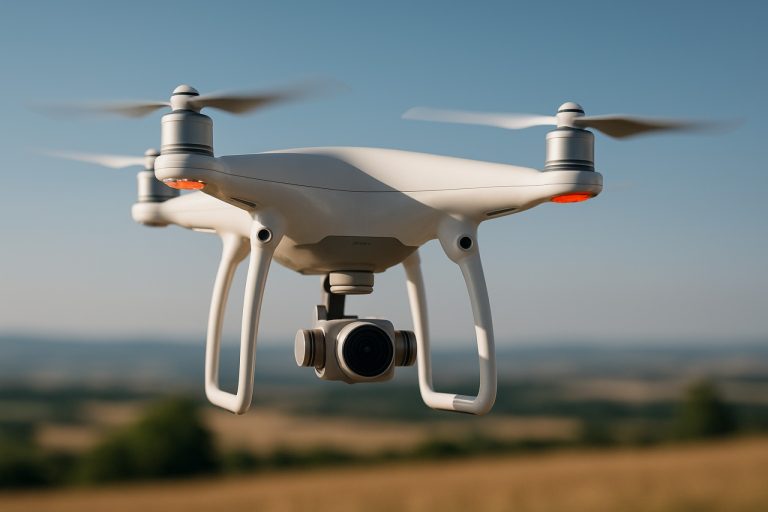
Unlocking Unprecedented Precision: The Game-Changing Role of MIR Spectroscopy in Pharmaceutical Quality Control. Discover How This Technology is Setting New Industry Standards for Safety and Efficacy.
- Introduction: The Critical Need for Advanced Quality Control in Pharmaceuticals
- What is MIR Spectroscopy? Principles and Technology Overview
- Key Advantages of MIR Spectroscopy Over Traditional Methods
- Applications of MIR Spectroscopy in Pharmaceutical Quality Assurance
- Case Studies: Real-World Success Stories in Pharma QC
- Challenges and Limitations: Navigating the Roadblocks
- Regulatory Perspectives: Compliance and Validation of MIR Techniques
- Future Trends: The Evolving Role of MIR Spectroscopy in Pharma
- Conclusion: Why MIR Spectroscopy is the Future of Pharmaceutical Quality Control
- Sources & References
Introduction: The Critical Need for Advanced Quality Control in Pharmaceuticals
The pharmaceutical industry faces increasing demands for rigorous quality control to ensure the safety, efficacy, and consistency of medicinal products. Regulatory agencies worldwide, such as the U.S. Food and Drug Administration and the European Medicines Agency, have established stringent guidelines that require comprehensive testing and validation throughout the drug development and manufacturing process. Traditional analytical techniques, while effective, often involve time-consuming sample preparation, destructive testing, and limited real-time monitoring capabilities. These limitations can hinder rapid decision-making and increase the risk of undetected deviations in product quality.
In response to these challenges, the adoption of advanced analytical technologies has become essential. Mid-infrared (MIR) spectroscopy has emerged as a powerful tool in pharmaceutical quality control, offering rapid, non-destructive, and highly specific analysis of chemical composition and molecular structure. MIR spectroscopy enables the detection of subtle changes in raw materials, intermediates, and finished products, supporting real-time process monitoring and control. Its ability to provide detailed molecular fingerprints aligns with the principles of Process Analytical Technology (PAT) initiatives promoted by regulatory bodies, which aim to enhance product quality through continuous monitoring and control of manufacturing processes (U.S. Food and Drug Administration).
As the pharmaceutical sector continues to innovate and expand, the integration of MIR spectroscopy into quality control frameworks represents a critical advancement. It not only addresses regulatory expectations but also supports the industry’s commitment to delivering safe and effective medicines to patients worldwide.
What is MIR Spectroscopy? Principles and Technology Overview
Mid-infrared (MIR) spectroscopy is an analytical technique that exploits the interaction of mid-infrared radiation (wavelengths typically from 2.5 to 25 μm, or 4000 to 400 cm-1) with matter to provide detailed information about molecular structure and composition. The fundamental principle underlying MIR spectroscopy is that molecules absorb specific frequencies of infrared light, corresponding to the vibrational transitions of their chemical bonds. When a sample is irradiated with MIR light, certain wavelengths are absorbed, resulting in a spectrum that serves as a molecular fingerprint unique to the sample’s chemical makeup.
The core technology of MIR spectroscopy involves a light source, a sample holder, a monochromator or interferometer (in Fourier-transform infrared, FTIR, systems), and a detector. FTIR is the most widely used MIR technique in pharmaceutical applications due to its high sensitivity, rapid data acquisition, and ability to analyze a wide range of sample types (solids, liquids, and gases). The resulting spectra can be interpreted qualitatively to identify compounds or quantitatively to determine concentrations of active pharmaceutical ingredients (APIs) and excipients.
Recent advances in MIR instrumentation, such as the development of attenuated total reflectance (ATR) accessories and miniaturized, portable devices, have further expanded its applicability in pharmaceutical quality control. These innovations enable non-destructive, real-time analysis with minimal sample preparation, supporting both laboratory-based and at-line or on-line process monitoring. The specificity and robustness of MIR spectroscopy make it a critical tool for ensuring the identity, purity, and consistency of pharmaceutical products, in line with regulatory requirements from agencies such as the U.S. Food and Drug Administration and the European Medicines Agency.
Key Advantages of MIR Spectroscopy Over Traditional Methods
Mid-infrared (MIR) spectroscopy offers several key advantages over traditional analytical methods in pharmaceutical quality control, making it an increasingly valuable tool for ensuring product safety and efficacy. One of the primary benefits is its ability to provide rapid, non-destructive analysis of both raw materials and finished products, significantly reducing the time required for quality assessments compared to conventional wet chemistry or chromatographic techniques. This speed enables real-time or near real-time monitoring, which is critical for process analytical technology (PAT) initiatives and continuous manufacturing environments U.S. Food and Drug Administration.
MIR spectroscopy also excels in its minimal sample preparation requirements. Unlike traditional methods that often necessitate extensive extraction, purification, or derivatization steps, MIR analysis can frequently be performed directly on solid, liquid, or even semi-solid samples. This not only streamlines workflows but also reduces the risk of sample contamination or loss European Medicines Agency.
Furthermore, MIR spectroscopy provides detailed molecular information, allowing for the simultaneous identification and quantification of multiple components within complex pharmaceutical matrices. Its high specificity and sensitivity to functional groups enable the detection of subtle changes in chemical composition, polymorphism, or degradation products—capabilities that are sometimes limited in traditional methods United States Pharmacopeia. Additionally, MIR instruments can be easily integrated into automated systems, supporting high-throughput screening and robust quality control processes.
Collectively, these advantages position MIR spectroscopy as a powerful complement or alternative to traditional quality control methods in the pharmaceutical industry, supporting both regulatory compliance and operational efficiency.
Applications of MIR Spectroscopy in Pharmaceutical Quality Assurance
Mid-infrared (MIR) spectroscopy has become an indispensable tool in pharmaceutical quality assurance, offering rapid, non-destructive, and highly specific analysis of raw materials, intermediates, and finished products. Its primary application lies in the identification and quantification of active pharmaceutical ingredients (APIs) and excipients, ensuring compliance with regulatory standards and product specifications. MIR spectroscopy enables the detection of polymorphic forms, which is critical since different polymorphs can exhibit varying solubility and bioavailability, directly impacting drug efficacy and safety. Furthermore, MIR is adept at monitoring the homogeneity of blends and detecting contaminants or adulterants at trace levels, thus safeguarding against cross-contamination and ensuring batch-to-batch consistency.
In process analytical technology (PAT) frameworks, MIR spectroscopy is integrated for real-time monitoring of critical quality attributes during manufacturing, such as moisture content, particle size, and chemical composition. This real-time feedback facilitates immediate process adjustments, reducing waste and improving overall product quality. The technique is also valuable in verifying cleaning validation, confirming the absence of residual APIs or cleaning agents on manufacturing equipment. Regulatory agencies, including the U.S. Food and Drug Administration and the European Medicines Agency, recognize MIR spectroscopy as a validated method for pharmaceutical analysis, further underscoring its importance in quality assurance protocols. As pharmaceutical manufacturing moves toward continuous production and greater automation, the role of MIR spectroscopy in ensuring robust quality control is expected to expand significantly.
Case Studies: Real-World Success Stories in Pharma QC
Mid-infrared (MIR) spectroscopy has demonstrated significant value in pharmaceutical quality control (QC) through a range of real-world applications. One notable case involves the rapid identification and quantification of active pharmaceutical ingredients (APIs) in solid dosage forms. For example, U.S. Food and Drug Administration researchers have reported the successful deployment of MIR spectroscopy for non-destructive tablet analysis, enabling real-time release testing and reducing the need for time-consuming wet chemistry methods. This approach not only accelerates batch release but also enhances data integrity and traceability.
Another success story comes from the implementation of MIR spectroscopy in the detection of counterfeit and substandard medicines. In collaboration with regulatory agencies, pharmaceutical companies have used portable MIR spectrometers to screen products in the supply chain, identifying deviations in excipient or API content with high specificity. This has proven especially valuable in regions where counterfeit drugs pose a significant public health risk, as highlighted by initiatives supported by the World Health Organization.
Additionally, MIR spectroscopy has been integrated into process analytical technology (PAT) frameworks for continuous manufacturing. Companies such as Novartis have reported improved process control and reduced production variability by monitoring critical quality attributes in real time. These case studies collectively underscore MIR spectroscopy’s transformative impact on pharmaceutical QC, offering enhanced speed, accuracy, and regulatory compliance across diverse operational settings.
Challenges and Limitations: Navigating the Roadblocks
While mid-infrared (MIR) spectroscopy offers significant advantages for pharmaceutical quality control, several challenges and limitations must be addressed to fully realize its potential. One primary concern is sample preparation and presentation. MIR spectroscopy is highly sensitive to water, which can interfere with spectral interpretation, especially in hydrated or aqueous samples. This often necessitates careful sample drying or the use of specialized accessories, increasing complexity and time requirements.
Another limitation is the relatively shallow penetration depth of MIR radiation, which restricts its application primarily to surface or near-surface analysis. This can be problematic for heterogeneous or layered pharmaceutical formulations, where bulk composition is critical. Additionally, MIR spectra of complex mixtures often exhibit overlapping absorption bands, complicating qualitative and quantitative analysis. Advanced chemometric methods are required to deconvolute these spectra, demanding expertise and robust calibration models.
Instrumental factors also pose challenges. MIR spectrometers, particularly those equipped with Fourier-transform (FTIR) technology, require regular maintenance and calibration to ensure accuracy and reproducibility. Environmental factors such as atmospheric CO2 and humidity can introduce spectral artifacts, necessitating controlled measurement conditions or background correction protocols.
Finally, regulatory acceptance and standardization remain hurdles. While MIR spectroscopy is recognized by pharmacopeias, its implementation in routine quality control is often limited by the lack of universally accepted protocols and validation guidelines. Overcoming these challenges will require continued collaboration between instrument manufacturers, regulatory agencies, and the pharmaceutical industry to develop robust, standardized methodologies (United States Pharmacopeia; European Medicines Agency).
Regulatory Perspectives: Compliance and Validation of MIR Techniques
The integration of Mid-Infrared (MIR) spectroscopy into pharmaceutical quality control is subject to stringent regulatory oversight to ensure data integrity, product safety, and efficacy. Regulatory agencies such as the U.S. Food and Drug Administration and the European Medicines Agency require that analytical methods, including MIR spectroscopy, undergo thorough validation before implementation in quality control environments. Validation parameters typically include accuracy, precision, specificity, linearity, range, and robustness, as outlined in guidelines such as the International Council for Harmonisation (ICH) Q2(R1) for analytical method validation.
Compliance also extends to Good Manufacturing Practice (GMP) requirements, which mandate that all analytical instruments and software used in MIR spectroscopy are qualified and maintained according to documented procedures. Data generated must be attributable, legible, contemporaneous, original, and accurate (ALCOA principles), and electronic records must comply with regulations such as FDA 21 CFR Part 11 for electronic signatures and records.
Furthermore, regulatory authorities increasingly expect risk-based approaches to method lifecycle management, including ongoing performance verification and change control. The use of chemometric models in MIR spectroscopy requires additional validation steps, such as model robustness and transferability assessments, to ensure consistent performance across different batches and instruments. Ultimately, successful regulatory compliance and validation of MIR techniques are critical for their acceptance in pharmaceutical quality control, supporting both product quality and patient safety.
Future Trends: The Evolving Role of MIR Spectroscopy in Pharma
The future of mid-infrared (MIR) spectroscopy in pharmaceutical quality control is poised for significant transformation, driven by advances in instrumentation, data analytics, and regulatory acceptance. One emerging trend is the integration of MIR spectroscopy with process analytical technology (PAT) frameworks, enabling real-time, in-line monitoring of critical quality attributes during manufacturing. This shift supports the industry’s move toward continuous manufacturing and real-time release testing, reducing batch failures and accelerating product release timelines (U.S. Food and Drug Administration).
Another key development is the application of machine learning and chemometric algorithms to MIR spectral data. These tools enhance the ability to interpret complex spectra, enabling more accurate identification of polymorphs, impurities, and subtle formulation changes. As cloud-based platforms and artificial intelligence become more accessible, remote and automated quality control using MIR spectroscopy is likely to become standard practice (European Medicines Agency).
Miniaturization and the development of portable MIR spectrometers are also expanding the technique’s utility beyond the laboratory, facilitating on-site inspections and decentralized quality assurance. Furthermore, regulatory bodies are increasingly recognizing MIR spectroscopy as a validated method for pharmaceutical analysis, which will likely drive broader adoption and standardization across the industry (U.S. Pharmacopeia).
Collectively, these trends suggest that MIR spectroscopy will play an increasingly central role in ensuring pharmaceutical product quality, safety, and regulatory compliance in the coming years.
Conclusion: Why MIR Spectroscopy is the Future of Pharmaceutical Quality Control
Mid-infrared (MIR) spectroscopy is poised to become a cornerstone technology in pharmaceutical quality control due to its unique combination of specificity, speed, and non-destructive analysis. Unlike traditional wet chemistry methods, MIR spectroscopy enables rapid, real-time monitoring of critical quality attributes without the need for extensive sample preparation. This capability aligns perfectly with the pharmaceutical industry’s increasing emphasis on process analytical technology (PAT) and continuous manufacturing, where timely and accurate data are essential for ensuring product quality and regulatory compliance.
The molecular fingerprinting ability of MIR spectroscopy allows for precise identification and quantification of active pharmaceutical ingredients (APIs), excipients, and potential contaminants. This specificity reduces the risk of batch failures and recalls, ultimately safeguarding patient safety. Furthermore, MIR instruments can be integrated directly into production lines, facilitating in-line or at-line analysis and enabling immediate corrective actions if deviations are detected. Such integration supports the principles of Quality by Design (QbD), which are increasingly mandated by regulatory agencies worldwide.
Recent advancements in MIR instrumentation, such as the development of robust fiber-optic probes and miniaturized spectrometers, have further expanded its applicability and ease of use in industrial settings. As regulatory bodies like the U.S. Food and Drug Administration and the European Medicines Agency continue to encourage the adoption of innovative analytical technologies, MIR spectroscopy stands out as a future-proof solution for pharmaceutical quality control. Its ability to deliver rapid, reliable, and comprehensive data makes it an indispensable tool for ensuring the safety, efficacy, and consistency of pharmaceutical products.
Sources & References
- European Medicines Agency
- United States Pharmacopeia
- World Health Organization
- Novartis
- International Council for Harmonisation (ICH) Q2(R1)



